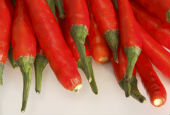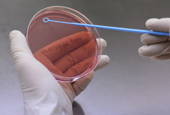Researchers have succeeded in analyzing the genetic information of the Eurasian black vulture, Aegypius monachus, for the first time in the world.
The team of scientists, led by the Natural Research Institute of Cultural Heritage, part of the Cultural Heritage Administration (CHA), used blood samples from two birds and were able to decode their DNA and RNA sequences. The researchers then used advanced DNA decoders and life science information technologies to finally identify the 200,000 unigenes in this species of raptor after five months of genome sequence analysis.
The Eurasian black vulture is an Old World vulture, related to eagles and hawks. Its range covers high altitudes across most of Central and Eastern Asia.
After analyzing the bird of prey's DNA, the scientists discovered that the DNA related to secretion and the immune system have been altered. The result is meaningful as the scientists were able to explain using DNA analysis why the raptors don't get infected with diseases and pathogens even though they consume the sometimes rotten meat of dead animals.
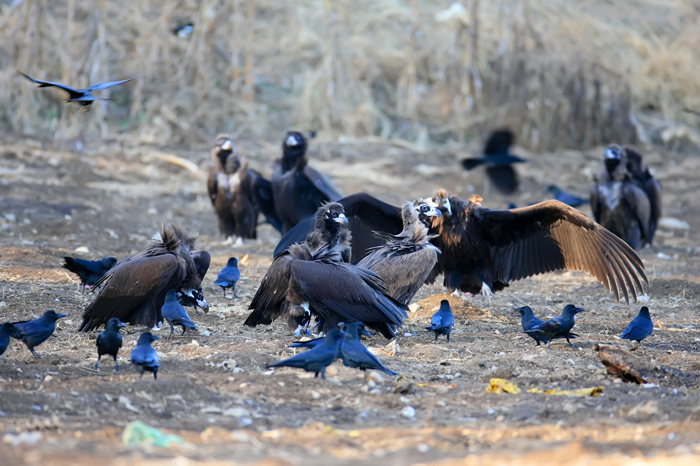
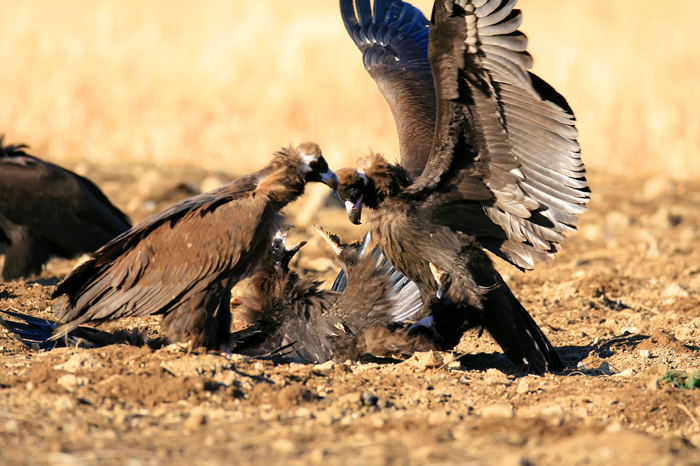
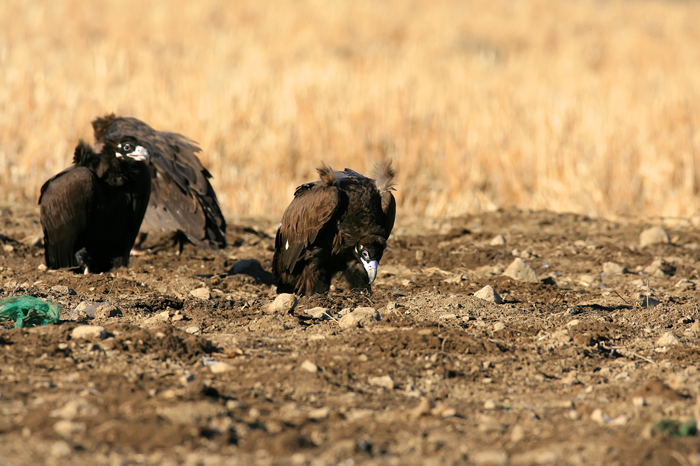
The CHA conducted the research in cooperation with Mongolia to study the ecology of the Eurasian black vulture and to protect the species. However, up until now they had little progress in securing the bird's DNA. The researchers conducted a genome-wide analysis and transcriptome (RNA sequencing) to study the physiological and ecological characteristics of the birds.
Vultures play an important role in ecology, consuming the carcasses of dead animals. This can prevent pathogens originating in corpses, such as the anthrax bacterium, from spreading to humans and other animals. However, the number of Old World vultures has been dwindling, due to changes in livestock farming practices in Mongolia, a major breeding place for the birds of prey, and decreases in the number of livestock carcasses remaining in the open.
According to the CHA's research on 48 winter habitats of the Eurasian black vulture in Korea, the number of birds residing in the country during wintertime is on the rise. This is due to the continuous offering of food for the birds and Korea is becoming an important habitat for the survival of this vulture species.
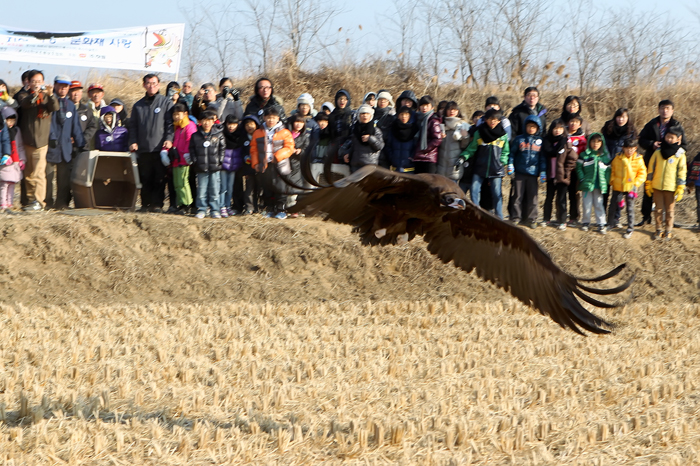
"We were able to confirm for the first time that vultures started diverging from hawks, in terms of evolution, some 80 million years ago," said a representative from TotalOmics Solutions, one of the companies participating in the research.
"We took a big step in vulture-related research by analyzing the raptor's genetic information," said a senior researcher from the National Science Museum.
"This is also a great advancement in genetic research, helping to protect an endangered bird species."
By Limb Jae-un
Korea.net Staff Writer
jun2@korea.kr

The team of scientists, led by the Natural Research Institute of Cultural Heritage, part of the Cultural Heritage Administration (CHA), used blood samples from two birds and were able to decode their DNA and RNA sequences. The researchers then used advanced DNA decoders and life science information technologies to finally identify the 200,000 unigenes in this species of raptor after five months of genome sequence analysis.
The Eurasian black vulture is an Old World vulture, related to eagles and hawks. Its range covers high altitudes across most of Central and Eastern Asia.
After analyzing the bird of prey's DNA, the scientists discovered that the DNA related to secretion and the immune system have been altered. The result is meaningful as the scientists were able to explain using DNA analysis why the raptors don't get infected with diseases and pathogens even though they consume the sometimes rotten meat of dead animals.



Eurasian black vultures return to Korea in the winter to escape the cold weather. Researchers recently succeeded in analyzing their genetic information for the first time in the world. (photos courtesy of the CHA)
The CHA conducted the research in cooperation with Mongolia to study the ecology of the Eurasian black vulture and to protect the species. However, up until now they had little progress in securing the bird's DNA. The researchers conducted a genome-wide analysis and transcriptome (RNA sequencing) to study the physiological and ecological characteristics of the birds.
Vultures play an important role in ecology, consuming the carcasses of dead animals. This can prevent pathogens originating in corpses, such as the anthrax bacterium, from spreading to humans and other animals. However, the number of Old World vultures has been dwindling, due to changes in livestock farming practices in Mongolia, a major breeding place for the birds of prey, and decreases in the number of livestock carcasses remaining in the open.
According to the CHA's research on 48 winter habitats of the Eurasian black vulture in Korea, the number of birds residing in the country during wintertime is on the rise. This is due to the continuous offering of food for the birds and Korea is becoming an important habitat for the survival of this vulture species.

A Eurasian black vulture is released after being rescued and treated. (photo courtesy of the CHA)
"We were able to confirm for the first time that vultures started diverging from hawks, in terms of evolution, some 80 million years ago," said a representative from TotalOmics Solutions, one of the companies participating in the research.
"We took a big step in vulture-related research by analyzing the raptor's genetic information," said a senior researcher from the National Science Museum.
"This is also a great advancement in genetic research, helping to protect an endangered bird species."
By Limb Jae-un
Korea.net Staff Writer
jun2@korea.kr

